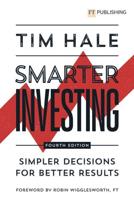Publisher's Synopsis
This eye-opening book brings together today's most relied upon tools of market analysis. Michael E.S. Gayed clearly explains how this powerful combination of major schools of thought of market analysis can help investors dramatically improve their judgment on likely market performance and spot important trends, thereby making successful investment decisions.
Intermarket Analysis and Investing begins with an overview of investment analysis that examines types of risk and portfolio structuring. Then it moves on to the three prominent schools of thought in market analysis with discussions of:
-Economic analysis, which is primarily concerned with the state of business, and anticipates phases of economic expansion and contraction by focusing on economic indicators
-Fundamental analysis, the most widely followed and practiced form of analysis, it looks at the accounting and financial position of companies in an attempt to evaluate intrinsic worth and true stock value
-Technical analysis or the market-timing school, practiced by "believers in the supremacy of trend analysis," and followers of the ticker tape. It is primarily concerned with the dynamics behind the fluctuation in the price of a stock
This book also examines the positive aspects and pitfalls to contrarian investing, top-down and bottom-up market approaches, comparative market analysis, and common-sense trend analysis.
By integrating economic, fundamental, and technical quantitative analysis into a sensible working framework, Intermarket Analysis and Investing exposes the inherent short-comings of relying too heavily or exclusively on any single approach. Each school of stock market analysis is thoroughly examined so that the reader can understand each approach and how it interacts with the others.
Part II stresses the economic by analyzing the most important aspects of the business cycle, the Fed's role in managing the balance of inflation and unemployment, and factors investors should watch to tame market risk and minimize loss during downtrends. It is here that the importance of economic indicators is emphasized, with an in-depth discussion of the 11 leading indicators that monitor the economy and help the investor anticipate long-term business trends, the four coincident indicators that help verify the predictability of the leading indicators, and the lagging indicators that help spot emerging structural trends.
Part III discusses the use of fundamental analysis, which compares the growth and finances of different securities and industry groups. It shows how earnings, sales, book value, P/E multiples, leverage, liquidity, and/or profitability of companies are used to reveal the worth of a security as an investment. The commodities market and the effect of globalization of securities markets are also examined.
Part IV shows how quantitative market analysis aids active investors in determining the short-or immediate-term direction of stocks. Intermarket Analysis and Investing shows how to improve investment decisions by integrating the best features of fundamental analysis and some well-known market timing techniques described and illustrated in this section.
The final section of the book provides insightful investment strategies that are based on the intermarket relationships previously discussed. By integrating the methods described in detail in this book, investors stand a much better chance of profiting from market opportunities and of achieving their objectives.









